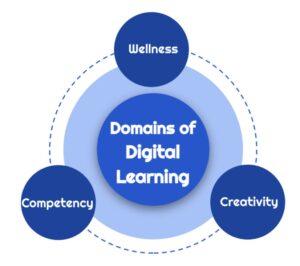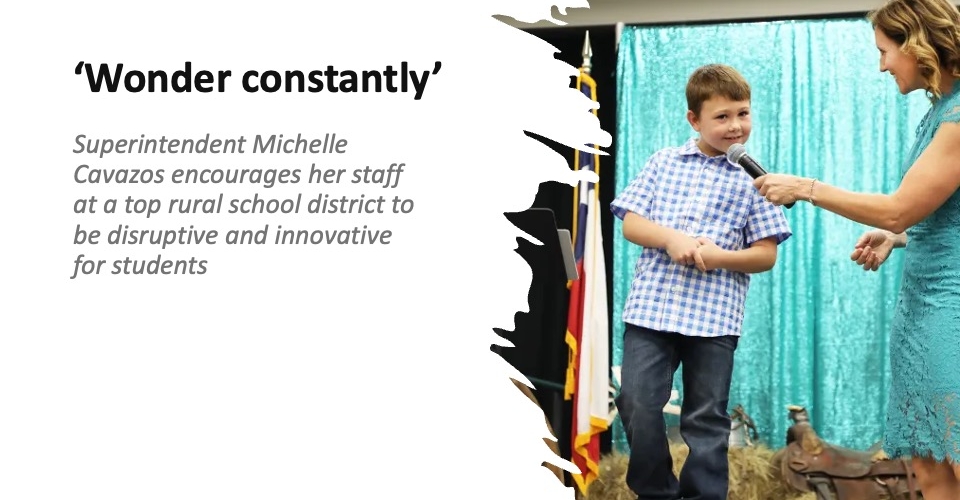 My primary goal as a digital learning coach has always been to increase the instructional capacity of educators—and the domains of the digital learning can achieve that. As we work through the 2022-2023 school year, I’ve expanded my vision in the context of our continued post-pandemic recovery: I’m coming in as a collaborative partner in embedding digital learning practices that help educators reclaim their classrooms, reignite their passions, and reaffirm their purpose.
My primary goal as a digital learning coach has always been to increase the instructional capacity of educators—and the domains of the digital learning can achieve that. As we work through the 2022-2023 school year, I’ve expanded my vision in the context of our continued post-pandemic recovery: I’m coming in as a collaborative partner in embedding digital learning practices that help educators reclaim their classrooms, reignite their passions, and reaffirm their purpose.
Learning loss can be a polarizing phrase, but the loss I observe most within the school walls is that loss of agency, both student and teacher agency, where leadership, autonomy, resilience, and flexibility are prioritized. Agency can be viewed as the intersection and application of three domains of digital learning: Wellness, competency, and creativity.
Wellness describes who students are and will become through a digital citizenship and social-emotional lens. Competency describes what digital skills and behaviors students acquire to become empowered learners. Creativity describes how students acquire knowledge and demonstrate learning through integrated technology.
Educators, schools, and districts working to advance digital learning at scale can classify their products, practices, goals and objectives within these three domains. To begin building a branched framework, there are components within each of the domains of digital learning that leaders can identify as areas for focus, goals, or growth rather than trying to elevate all aspects of digital learning at once. These areas of focus can be categorized to help school teams or leaders identify lanes in which to work toward change.
1. Wellness
Wellness is more complex and comprehensive than outdated concepts of digital citizenship. In fact, digital citizenship is often viewed within a narrow framework of internet safety and behavior. Wellness builds upon and expands digital citizenship while including families, society, social-emotional learning and mental health in a more holistic view of digital literacy.
Schools looking to broaden their scope of wellness support for their learning community can begin by expanding from a limited digital citizenship perspective to incorporate technology that supports social-emotional learning and engages families and communities.
2. Competency
This domain spans skills learners acquire and opportunities we provide to measure capacity and growth. Competency in digital learning addresses a student’s ability to accomplish tasks and apply authentic skills across content areas, rather than navigating a scope and sequence of operational tasks.
FETC 2023
The Future of Education Technology® Conference takes place live and in-person Jan. 23-26, 2023, in New Orleans. Register now!
Maintaining instructional focus on student processes rather than products, the competency domain addresses capacity-building, skill-development, and digital literacy as priorities for effective digital learning.
3. Creativity
In order to empower a generation of content creators, we need to prioritize digital design and creativity as critical classroom competencies. We need to update what it means for students to publish work through digital media, blogs, podcasts, and presentations. It is more important than ever to re-engage all learners with effective tech integration, continuing the shift from content consumption to content creation.
Future-ready learners require options and opportunities to ignite higher-order thinking. Creativity and flexibility promote engaged and empowered learning, and collaborative problem-solving. Creativity requires an approach and an educator who believes that innovation and student voice and choice through authentic digital literacy is an essential classroom competency.
How domains of digital learning lighten the load
When it comes to professional learning, it can be too much to expect classroom teachers to manage the necessary work of rebuilding students’ connection to school and learning while reclaiming their own. Teachers have identified this past year as their hardest yet, leaving little room for professional growth beyond essentials.
More from DA: This high-tech map is helping leaders chart a course back to high achievement
Conceptualizing digital learning across domains can lighten the load. Isolating digital wellness, competency, or creativity reduces the cognitive load on educators and shifts the expectation toward more targeted capacity-building. Here are three critical questions to consider:
- Wellness: Who is having the conversations about digital learning in your classrooms?
- Competency: Where are the barriers to capacity-building, skill development and digital literacy?
- Creativity: What do your educators need to increase opportunities for student creativity?
Considering these three domains of digital learning allows administrators to focus assessment on ways in which teachers engage students with technology. Let’s move past ideas for entry-level tech integration. Let’s broaden our interpretation of digital learning to a more meaningful understanding that addresses student wellness, competency, and creativity.









